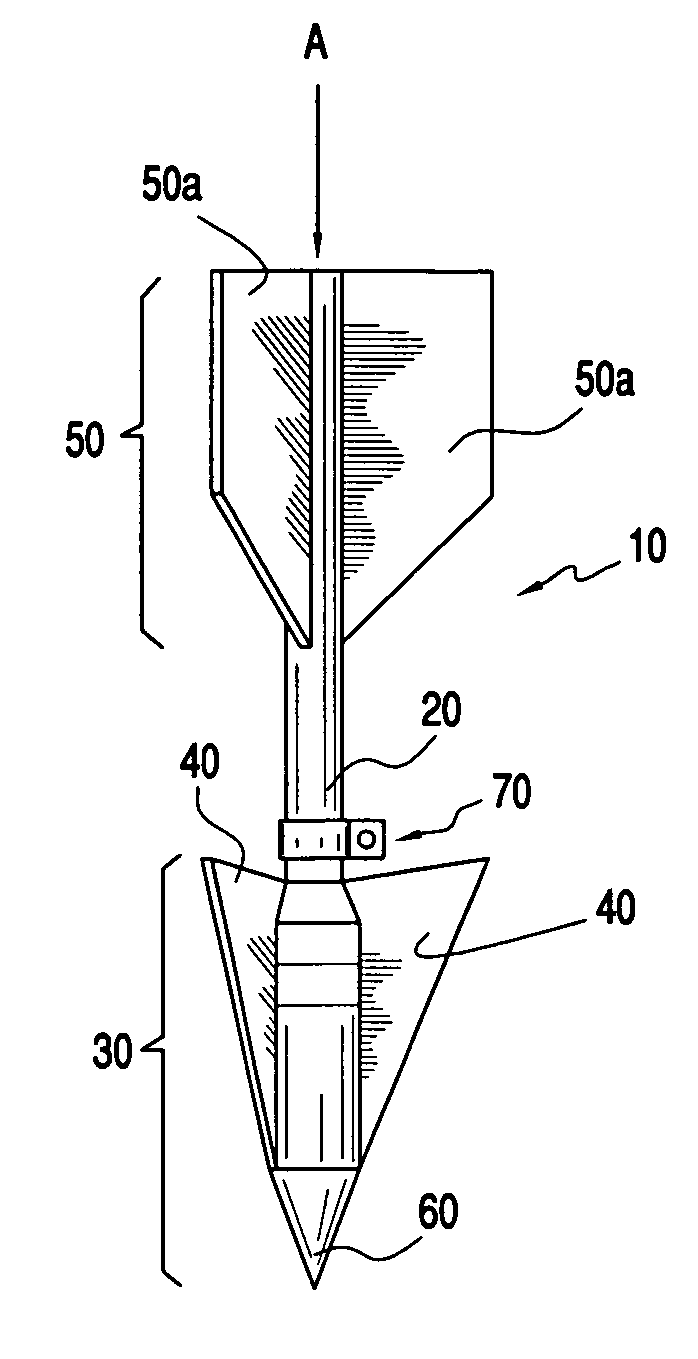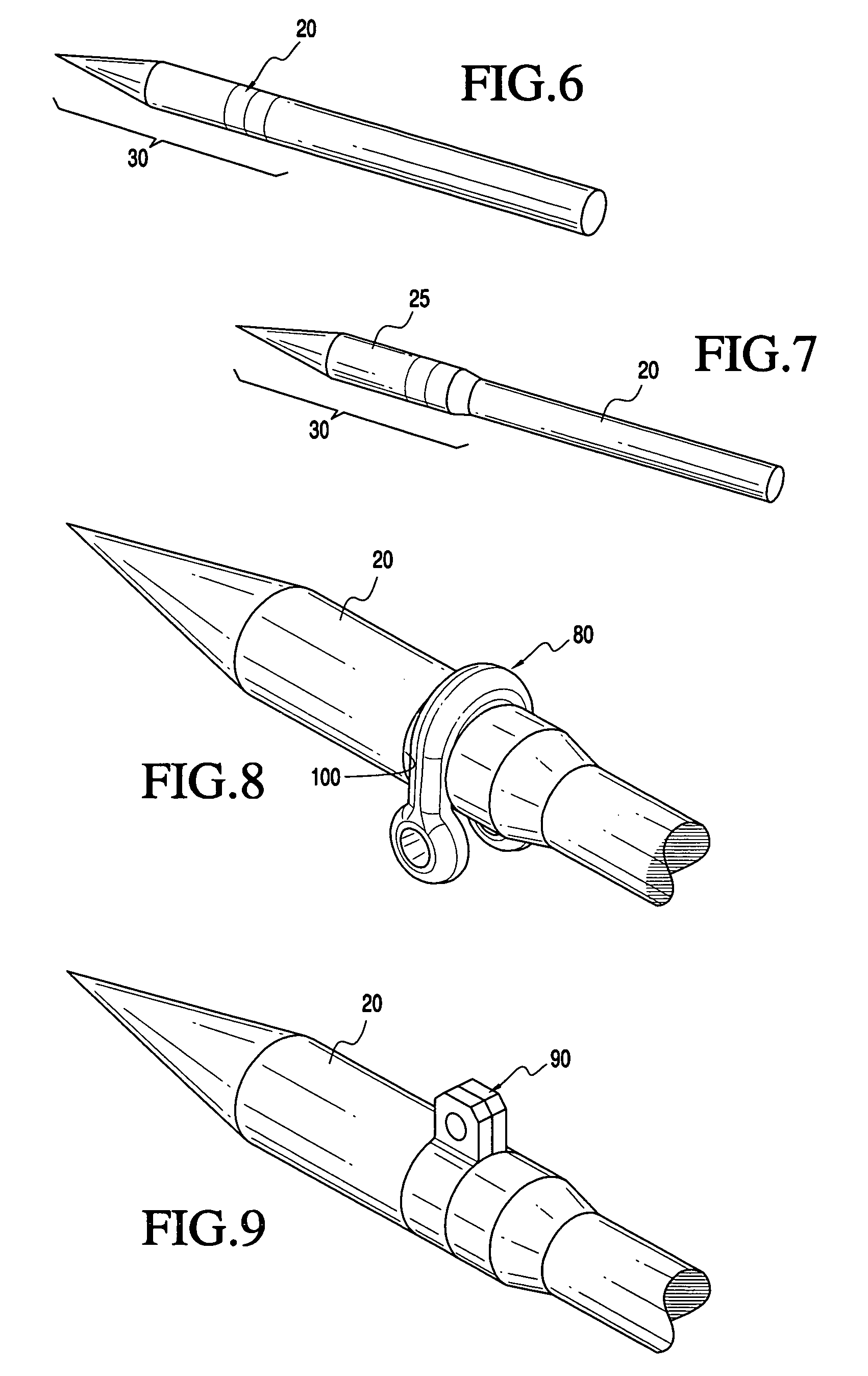Anchor for marine mooring
a technology for anchors and marine structures, applied in anchors, vessel construction, construction, etc., can solve the problems of limiting the mooring line direction, difficult embedding, and not allowing the anchor to dig deeper
- Summary
- Abstract
- Description
- Claims
- Application Information
AI Technical Summary
Benefits of technology
Problems solved by technology
Method used
Image
Examples
Embodiment Construction
[0017]Several of the primary structural attributes of the anchor of the present invention are first generally described. Such attributes can be modified and configured to suit particular applications.
[0018]1. Anchor shaft. The shaft may be designed with a larger outer diameter over the lower section (proximal to the nose section of the anchor) to both add mass, lower the center of gravity and reduce relative frictional resistance on the upper section while the anchor is penetrating the soil. In one embodiment of the anchor, the anchor shaft terminates in a pointed cone in the nose section (i.e. the lower end), and the nose section fins do not extend beyond the base of the cone, greater soil penetration can generally be achieved due to reduced frictional soil forces developing on the point.
[0019]2. Radial fins. Similar to the holding attributes of a plate type anchor, the radial fins of the present anchor provide a majority of the soil resistance needed for the anchor holding capacit...
PUM
 Login to View More
Login to View More Abstract
Description
Claims
Application Information
 Login to View More
Login to View More - R&D
- Intellectual Property
- Life Sciences
- Materials
- Tech Scout
- Unparalleled Data Quality
- Higher Quality Content
- 60% Fewer Hallucinations
Browse by: Latest US Patents, China's latest patents, Technical Efficacy Thesaurus, Application Domain, Technology Topic, Popular Technical Reports.
© 2025 PatSnap. All rights reserved.Legal|Privacy policy|Modern Slavery Act Transparency Statement|Sitemap|About US| Contact US: help@patsnap.com



